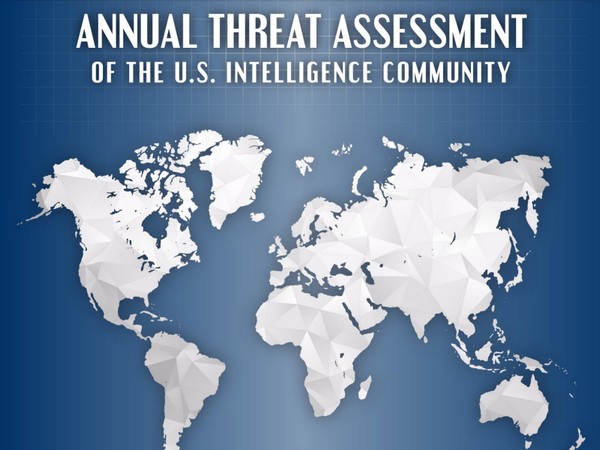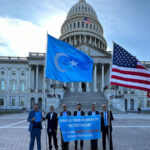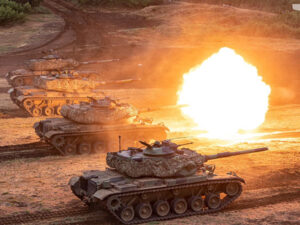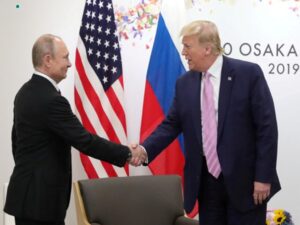
Washington [US], March 9 (ANI): The Office of the Director of National Intelligence, US released its 2023 annual threat assessment on Wednesday (local time), which warned of threats against the US posed by China, Russia, North Korea and Iran. The report also warned of global challenges like climate change and evolving technologies that could have the potential to “disrupt” traditional business and society, while creating “unprecedented vulnerabilities.”
The United States is expected to face a “complex” security environment and will need to work to confront two “critical” strategic challenges: rising powers, like China, seeking dominance in the global order, the US intelligence community assessed. “These two strategic challenges will intersect and interact in unpredictable ways, leading to mutually reinforcing effects that could challenge our ability to respond, but that also will introduce new opportunities to forge collective action with allies and partners, including non-state actors,” the report stated.
On China, the US intelligence community said the Chinese Communist Party will continue its efforts to make China the “preeminent power in East Asia and a major power on the world stage.” Officials in their report said that Chinese President Xi Jinping, in his third term, will work to press Taiwan on unification and will seek to “undercut US influence” by driving “wedges between Washington and its partners.”
With regard to Taiwan, the intelligence community warned that the PRC is using “coordinated, whole-of-government tools” as it seeks to assert sovereignty over Taiwan. Reports warned that China may build on its actions from 2022, and include more Taiwan Strait centerline crossings or missile overflights of Taiwan.
Officials also warned that if China succeed in gaining control over Taiwan, it would have “wide-ranging effects, including disruption to global supply chains for semiconductor chips because Taiwan dominates production of cutting-edge chips.”
Officials also warned that Beijing is bolstering its domestic defense production capabilities for Weapons of Mass Destruction (WMD) and advanced conventional weapons. The intelligence community also warned that China is building hundreds of new ICBM silos. “Beijing worries that bilateral tension, US nuclear modernization, and PLA’s advancing conventional capabilities have increased the likelihood of a US first strike,” the report states. “Beijing’s heightened confidence in its nuclear deterrent is likely to bolster its resolve and intensify conventional conflicts.”
And with regard to cyber and technology, the US intelligence community assesses that China represents the “broadest, most active, and persistent cyber espionage threat to US Government and private-sector networks.” Officials warn that China is “capable of launching cyberattacks that could disrupt critical infrastructure services within the United States, including against oil and gas pipelines, and rail systems.” “China leads the world in applying surveillance and censorship to monitor its population and repress dissent,” the report states.” Beijing conducts cyber intrusions that are targeted to affect US and non-US citizens beyond its borders — including journalists, dissidents, and individuals it views as threats — to counter views it considers critical of CCP narratives, policies, and actions.”
Officials also warned that China is rapidly expanding and improving its artificial intelligence and big data analytics capabilities, which could expand beyond domestic use. Shifting to Russia, the US intelligence community warned that Moscow will remain a “formidable and less predictable challenge to the United States in key areas during the next decade but still will face a range of constraints.” “Russia probably does not want a direct military conflict with US and NATO forces, but there is potential for that to occur,” the intelligence community assessed. “Russian leaders thus far have avoided taking actions that would broaden the Ukraine conflict beyond Ukraine’s borders, but the risk for escalation remains significant.”
Officials warn the relationship between China and Russia creates “potential threats in areas such as security collaboration, specifically arms sales and joint exercises, and diplomacy, where each country has used its veto power on the UN Security Council against US interests.” And while China represents one of the greatest threats to US national security, officials said Russia, too, presents “one of the most serious foreign influence threats to the United States,” due to its intelligence services and influence tools that seek to sow discord in the US and influence US voters and decision-making.
Officials said Iran will continue to threaten U.S. people directly and via proxy attacks, particularly in the Middle East, and remains committed to developing “surrogate networks inside the United States, an objective it has pursued for more than a decade.”
Officials say Iran is “not currently undertaking the key nuclear weapons-development activities that would be necessary to produce a testable nuclear device,” but warned Tehran has “accelerated the expansion of its nuclear program.” “If Tehran does not receive sanctions relief, Iranian officials probably will consider further enriching uranium up to 90 per cent,” the report states.
Iran also represents a “major threat” to US networks and data, due to its capabilities and willingness to conduct “aggressive cyber operations.” The US intelligence community assessed that North Korea is continuing its efforts to enhance its nuclear capabilities, targeting the US and its allies.
Officials warned that North Korea’s military “will pose a serious threat to the United States and its allies by continuing to invest in niche capabilities” designed to provide Kim Jong Un with a “range of options to deter outside intervention, offset enduring deficiencies in the country’s conventional forces, and advance his political objectives through coercion.”
Kim Jong Un remains “strongly committed” to expanding North Korea’s nuclear weapons arsenal and maintaining nuclear weapons as a “centerpiece of his national security structure,” the report states.
Officials also warned that North Korea’s chemical or biological weapons “remain a threat.” The report states that the intelligence community is “concerned” that North Korea “may use such weapons during a conflict or in an unconventional or clandestine attack.”
Infectious disease was also included in the assessment following the COVID-19 global pandemic. The intelligence community said COVID “remains one of the most significant threats to global public health, at a cost of more than 6.5 million lives lost and trillions of dollars in lost economic output to date.” “Countries globally remain vulnerable to the emergence or introduction of a novel pathogen that could cause a devastating new pandemic,” the report stated.
As for the origins of COVID-19, the report states that the intelligence community “continues to investigate” how COVID first infected humans. US citizens and U.S. interests “at home and abroad” will face a “persistent and increasingly diverse threat” from terrorism during the next year, said the report.
“Individuals and cells adhering to ideologies espoused by ISIS, Al-Qaeda, or the transnational Racially or Ethnically Motivated Violent Extremists (RMVE) movement pose a significant terrorist threat to US persons, facilities, and interests,” the report states. It said Iran and Lebanese Hizballah “remain committed to conducting terrorist attacks and could seek to do so on US soil.”
As for ISIS, the IC assessed that the group seeks to “rebuild capabilities and replenish its ranks,” and said its ideology will “continue to inspire attacks,” including in the US. With regard to Al Qaeda, the IC assessed that the threat the terrorist organization poses in Afghanistan will “depend on the Taliban.” (ANI)


















